The migration of 19th century Luso-Asians from Macau to Hong Kong, and the success of some who started new businesses, is an example of their continued resilience over the centuries. To do so, they placed their hopes on an uncertain future, and often disregarded a long-held aversion to commerce and manual labor that paralyzed Macau’s recovery as a trading port. [1]
To understand how this trend began, we should first consider the social condition of Luso-Asians since the colonial period, which involves their motivations for leaving western India, and the new opportunities awaiting those who migrated to Hong Kong after 1840. We will then present the first part of a case study involving an entrepreneurial family who settled in the British colony, providing evidence in this and later installments that business ventures by Macanese were not only common in Hong Kong, but also spread to other Asian ports through the early years of the 20th century.
A Short History of Portuguese Migrations in Asia
In the 19th century most members of the Portuguese community in Hong Kong were immigrants born in Macau who identified themselves as “Macaense” (Macanese), following ancestors who lived in Portuguese territories for nearly three centuries. All were generally considered offspring of the Portuguese Overseas Empire. In reality, they were part of a broad collection of “Luso-Asians”, a racially-mixed group born from unions of Portuguese and indigenous women in Western India and Southeast Asia brought together by long-standing trade relations.[2]
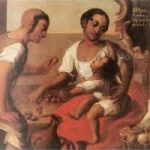
Many were members of families originating from indentured servants, slaves, or New Christian (converted) Jews, often born out of wedlock.[3] The class and economic differences underlying this condition, especially for the underclass, largely determined the social status of European-born Portuguese and Luso-Asians in the early 16th century. These distinctions were principally based on perceptions of ethnicity and the origins of birth. One of the ironies of the period was that the earliest unions were encouraged by the Roman Catholic Church and Portugal’s colonial administration, the Estado da India, to maintain social stability, provide a military presence, and as a source of cheap labor in Goa.[4]
As conditions in Portuguese India deteriorated, many mestizo families migrated east in hopes of being involved in trade as a means of survival. Many first settled under British protection near Bengal and Madras.[5] Some continued toward Asia, eventually settling in Portuguese trading ports established decades earlier.[6] They were part of overlapping movements of mestizo descendants beginning in the 17th century, who can be traced to several locations where Luso-Asian culture developed: first in eastern India from about 1640; in Southeast Asian ports, including Malaysia, Thailand, and what is now Cambodia and Vietnam from 1511 through 1700; in Macau from 1553 to about 1870; in Hong Kong from 1841 to about 1970; and in the Americas, Brazil, and Australia after the end of World War II.[7]
The Macanese remain the largest and most active of the Luso-Asian groups. During Macau’s economic decline in the1830s, those fortunate to find work were often connected to merchant families that held trading rights issued by the Leal Senado (the municipal council).[8] A small number of underclass and less affluent Macanese, however, out of necessity and through the encouragement of Jesuit and Lazarist priests obtained training as linguists, printers, compositors, bookkeepers, and clerks to secure jobs with foreign merchants. This break with Portuguese traditions led a few graduates to begin working for French and Dutch traders, and eventually with the British East India Company and “country traders”, who arrived in 1773, and were positioned to conduct trade in Canton (Guangzhou) 119 kilometers to the north. The situation continued through the end of the Opium Wars (1840-1860). As Macau declined, more young people migrated to Hong Kong seeking employment.
This was the case of Leonardo d’Almada y Castro, who was a clerk in Macau before moving to Hong Kong with the staff of the Superintendency of British Trade in 1842. Another was Januario A. de Carvalho, an accountant who moved from Macau to work for the Colonial Treasurer in 1842.[9] A third was a linotype operator trained at the Seminary of St. Joseph named Delfino Noronha, who moved to Hong Kong to run his own printing press in 1844.[10] After the 1860s, as Macau was eclipsed as a trading port by Hong Kong, succeeding waves of Macanese began moving across the Pearl River Delta to find work. Among those were Lisbello de Jesus Xavier, the subject of our case study, who migrated in 1880.[11]
The Origins of an Entrepreneur
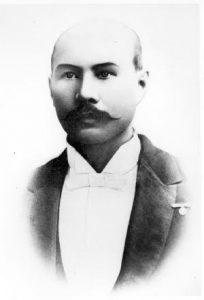
Lisbello Xavier was born in Macau in 1862 in the parish of Sao Lourenco near the Lilau district, where Portuguese immigrants first settled in the late 16th century. Church records indicate that this branch of the Xavier family had lived in Macau since about 1780, while family members suggest their forbearers likely migrated from Goa. Due to the insularity of the Macanese community, later members of the Xavier family married Luso-Asians whose families also migrated from India in the same period, further deepening cultural ties.
Like Noronha, Lisbello Xavier was educated at the Seminary of St. Joseph, established in 1784 and located close to his home parish. During a period of declining opportunities in Macau, the curriculum of the school involved training in languages and the mechanical arts, which included typeset printing. Learning this skill was possible only after the school acquired a press from the “Gazeta de Macau”, a local newspaper which ceased publishing in 1826. According to recent scholarship, it is conceivable that Lisbello Xavier and Delfino Noronha were trained on the same machine, and both likely apprenticed as print compositors with firms in Macau, albeit several years apart. By the time Xavier arrived in Hong Kong, Noronha & Co. was already established as one of the most successful printing businesses in the colony.
The environment that 26-year-old Lisbello Xavier encountered was still evolving. While Macau had been considered a livelier and more established trading port, Hong Kong had a deep harbor but fewer serviceable roads and almost no buildings that could withstand the monsoon rains. Following the island’s occupation in 1842, Macanese immigrants lived in primitive conditions. Food was initially expensive and difficult to obtain from local farmers. Housing was scarce and inadequate for large families, with illumination only from a few well-placed oil lamps. Entertainment was limited to religious ceremonies, while tropical diseases afflicted thousands and petty crime were rampant. Life in general was also isolated from British, Chinese, and other European residents in the workplace and in separate neighborhoods. By the 1853 census, the colony had only 459 Portuguese residents out of a population of 39,017.[12]
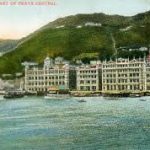
Within fifty years, conditions had changed dramatically. Food and housing were improved, with most Macanese settled into an enclave west of Victoria on the island or across the harbor in Kowloon. The Catholic Church established a new diocese that encompassed both Hong Kong and Macau, then built a large cathedral to accommodate the growing population. By 1891 the number of Portuguese in Hong Kong increased to 2,089.[13] Farms and residential enclaves in Kowloon begun by Portuguese entrepreneurs appeared with regularity, helping to push the colony’s boundary from the “New Territories” to the Chinese border. An active business community had also taken root. Mercantile and clothing shops, and firms that shipped opium, silver, and food stuffs were common. To link the island with the mainland, a regular ferry service began in 1898.
Evidence of a social and political infrastructure also began to appear. In 1861 representatives of the largest merchant firms formed the Hong Kong General Chamber of Commerce. The Chamber soon joined in an alliance with its political counterpart, the Hong Kong Legislative Council, established in 1843. Together these institutions introduced a pattern of control that insured British interests would dominate commerce and civic life through the end of the 20th century.[14] Within this society, most Macanese were hired for mid-level positions as bank clerks, linguists, compositors, and accountants, always below British managers and above Chinese laborers, to service the large bureaucracy and a growing number of trading firms in the colony.
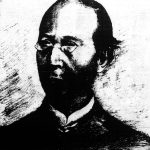
Delfino Noronha was an exception to the rule. Noronha & Co. was one of the first Macanese owned businesses in Hong Kong, and had grown successful due to a contract in 1847 to print “The Hongkong Almanack” for the Registry Office. Winning a competition over several British and Scottish printers in 1859, Noronha signed another agreement to print the government’s public notices, including its premier journal, the “Hong Kong Government Gazette”. A Chinese edition of the journal was added in 1862. In later years, Noronha purchased the “Celestial Empire Press” from Antonio H. Carvalho in Shanghai, and installed one of his sons as the manager.
The Hongkong Printing Press
Family chronicles note that Lisbello Xavier worked as a compositor for Noronha & Co. from 1880 through 1887. In 1888, informed that his protégé wanted to open his own press, Noronha granted Xavier and his new venture, The Hongkong Printing Press, a subcontract to print government notices and the gazette on its own. To finance equipment, Lisbello Xavier sold a prized clarinet to purchase his first linotype machine. The clarinet was eventually bought back by the family in 1919.
Lisbello Xavier incorporated the press on June 1, 1888. Because of the intense labor involved and the high cost of printing, usually only large publishers like Noronha and the government could afford to operate. Xavier was fortunate, however, to take over printing of the colony’s notices at a time when Portuguese business activity in Hong Kong was growing. Like Noronha before him, the press’s high profile became the basis of the company’s expansion. Besides government printing, the Hong Kong press produced tourist guides for other port cities where immigrant Macanese settled, including Canton, Shanghai, and Macau. The additional revenue from sixteen (16) editions of the guides beginning in 1893, and expansion into the new field of product labels, allowed the company to flourish. To keep up with the demand, the business moved to a new factory site at No. 3 Wydham Street in central Hong Kong in 1905.
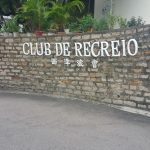
The success of the business and Lisbello Xavier’s rise in social status was confirmed by an invitation to join the Club Lusitano in 1903, which mirrored the Hong Kong Jockey Club and other “British only” associations where social and business relations were often forged. In the same year Lisbello provided funding and was elected the first president of the Club de Recreio in Kowloon. Recreio’s purpose was to encourage informal gatherings through athletic competition by organizing leagues and by building cricket, field hockey and soccer fields, and other facilities for Macanese who moved to the region after it was annexed in 1860. The club was a timely addition for the families of bank clerks and merchant assistants seeking a haven away from the crowded, and often unwelcoming, environment of central Hong Kong. Other Macanese investors had already made the transition, including Delfino Noronha, who owned a large farm in Kowloon and set up the first ferry service to the island in the 1870’s.
Lisbello Xavier spent the next decade expanding the business, while buying property in the New Territories north of Kowloon, and bringing his sons and other relatives into the firm. His death at the age of 47 in May 1909, however, remains a mystery. Unconfirmed family accounts suggest that he died shortly after being struck with a bamboo pole during an altercation outside his business. At his passing, Lisbello’s eldest son, Pedro d’Alcantara Xavier, became the company’s next president. A new chapter in the history of Hongkong Printing Press was about to be written.
Next time: A New Generation of Entrepreneurs: 1909 – 1941
__________________________________________
[1] Colonial perceptions of class status were often at odds with behavior exhibited in commerce conducted by early Portuguese in India and Luso-Asians in Southeast Asia, which is frequently noted in studies of Portugal’s decline. See C.A. Montalto de Jesus, Historic Macao, Hong Kong, 1902 and 1926, and C.R. Boxer, Fidalgos in the Far East, Oxford: Oxford University Press, 1968.
[2] See my article: “Luso-Asians and the Origins of Macau’s Cultural Development”, Journal of the Royal Asiatic Society – Hong Kong, Vol. 57, 2017.
[3] The incorporation of lower status Chinese women was also evident. As one scholar writes, “Very rarely did Chinese women of higher status agree to marry a Westerner. … In the family histories I compiled, I did not come across one single case that broke this rule.” Joao de Pina-Cabral, Between China and Europe: Person, Culture and Emotion in Macao, London, 2002:165.
[4] Edgar Prestage, The Portuguese Pioneers, London, Oxford University, 1933, pp. 299‒300.
[5] See Stefan Halikowski-Smith, ’Languages of Subalternity and Collaboration: Portuguese in English settlements across the Bay of Bengal, 1620‒1800’, International Journal of Maritime History, Vol 28, Issue 2:2016.
[6] See John Byrne, “The Luso-Asians and other Eurasians: Their Domestic and Diasporic Identities”, 131-154, in Laura Jarnagin, ed., Portuguese and Luso-Asian Legacies in Southeast Asia, 1511– 2011, The Making of the Luso-Asian World, Vol. 1: Singapore: Institute of Southeast Asian Studies, 2011.
[7] Research on the Macanese Diaspora is currently being conducted at the U.C. Berkeley, and is summarized at www. FarEastCurrents.com.
[8] Many merchant families in Macau also served in the Leal Senado. C.R. Boxer, The Portuguese Seaborne Empire, 1415‒1825, New York, Knopf,1969: 276-286.
[9] J.P. Braga, The Portuguese in Hong Kong and China, Univ. of Macau, BHM Koo, edit. 1944, p. 121-125. Additional information was obtained from the Jorge Forjaz Collection, Old China Hands Archive, California State University, Northridge.
[10] The information concerning Delfino Noronha can be found in Stuart Braga’s book: Making Impressions: A Portuguese Family in Macau and Hong Kong, 1700-1945, IIM, Macau, 2015.
[11] Information on Lisbello de Jesus Xavier is taken from an unpublished four part manuscript written by Eduardo P. Xavier and Dr. Anita M. Xavier, copies of which were provided to the author for inclusion in this and future articles.
[12] Hongkong Government Gazette, December 1853.
[13] Hongkong Government Gazette, August 1891.
[14] British interests were so dominant that it was not until 1906 that Kai Ho Kai was appointed the first Chinese non-voting member of the Legislative Council. Jose Pedro Braga became the first Macanese non-voting member in 1929. Kai’s appointment was an acknowledgement of the importance of the Chinese business community to the colonial government. See John Carroll’s “Chinese Collaboration in the Making of British Hong Kong”, p. 13-29, in Hong Kong’s History, Tak-Wing Ngo ed. Routledge, London, 1999.
More Stories
Studies of China’s Greater Bay Area:
Colonial Journalism in 19th Century Macau and Hong Kong
Women and Cultural Boundaries in Macau